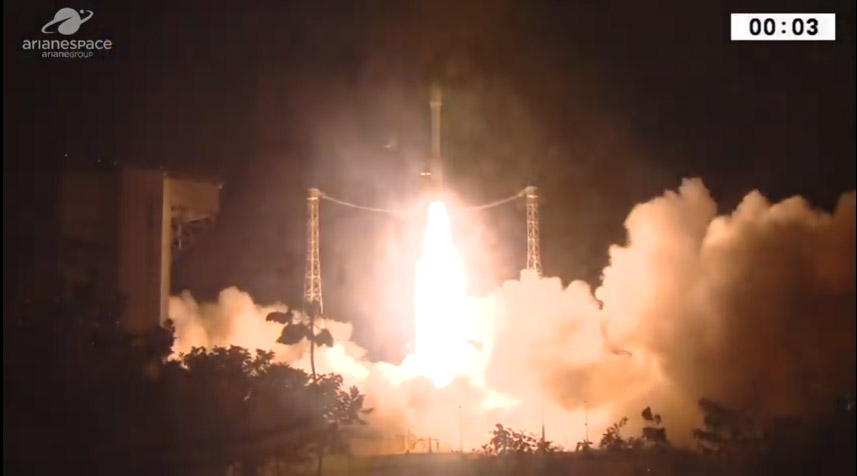The failure of a European Vega rocket during a July launch attempt was likely caused by a problem with the vehicle's second-stage motor, an investigation has concluded.
The 98-foot-tall (30 meters) Vega, which is operated by France-based company Arianespace, suffered a major anomaly during the July 10 launch of the FalconEye1 Earth-observation satellite for the United Arab Emirates. Both the rocket and the spacecraft were lost.
On July 11, a commission — co-chaired by the European Space Agency's (ESA) inspector general and Arianespace's senior vice president of technical and quality — was appointed to investigate the accident. And the investigators have now come to a conclusion.
Video: Watch the Vega Rocket's Launch Failure
Related: Europe's Vega Rocket in Photos

"The commission identified the anomaly's most likely cause as a thermo-structural failure in the forward dome area of the Z23 motor," ESA officials wrote in a statement today (Sept. 5).
The Z23 powers the second stage of the four-stage Vega, which is designed to loft small to medium-size payloads.
Vega can return to flight after this finding has been verified and corrective action has been taken on all "subsystems, processes and equipment concerned," the commission recommended. This milestone is expected by early next year, ESA officials said.
Vega first flew in February 2012 and had racked up 14 consecutive successful missions before the July 10 liftoff, which was known as Flight VV15.
Breaking space news, the latest updates on rocket launches, skywatching events and more!
"I would like to thank the co-chairs of the Independent Inquiry Commission, as well as all members," Arianespace CEO Stéphane Israël said in a Sept. 5 statement.
"Their work on identifying the causes of the Flight VV15 anomaly, and the well-defined actions to be carried out from now until the end of the year, will pave the way for a resumption of Vega launches as from the first quarter of 2020, under the requisite conditions of reliability," he added. "Along with our industrial partner Avio, we will be doing everything in our power to reconnect with the 14 successful launches already recorded by our light launch vehicle."
- Europe's Vega Rocket Launches on 1st Flight (Gallery)
- Ariane 5 Rocket Lofts 2 Satellites in Gorgeous Sunset Launch
- Meet Ariane 6 & Vega C: Europe's New 'Rideshare' Rockets (Videos)
Mike Wall's book about the search for alien life, "Out There" (Grand Central Publishing, 2018; illustrated by Karl Tate), is out now. Follow him on Twitter @michaeldwall. Follow us on Twitter @Spacedotcom or Facebook.
Join our Space Forums to keep talking space on the latest missions, night sky and more! And if you have a news tip, correction or comment, let us know at: community@space.com.

Michael Wall is a Senior Space Writer with Space.com and joined the team in 2010. He primarily covers exoplanets, spaceflight and military space, but has been known to dabble in the space art beat. His book about the search for alien life, "Out There," was published on Nov. 13, 2018. Before becoming a science writer, Michael worked as a herpetologist and wildlife biologist. He has a Ph.D. in evolutionary biology from the University of Sydney, Australia, a bachelor's degree from the University of Arizona, and a graduate certificate in science writing from the University of California, Santa Cruz. To find out what his latest project is, you can follow Michael on Twitter.
